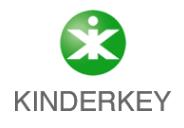 Add My Company
Add My Company
Sign In
What is Down Syndrome?
09-03-2017

Across England and Wales, around 775 babies are born with Down Syndrome every year – a woman aged 20 years has only a 1 in 1,500 chance of having a Down Syndrome baby, while a woman aged 40 has a 1 in 100 chance.
Children with the condition, also known as Down’s Syndrome, share some common physical characteristics and have a degree of learning disability – although the level varies for each person.
What is Down Syndrome?
Down Syndrome is a congenital disorder that causes intellectual impairment and specific physical features such as short stature, broad facial profile, almond-shaped eyes, a flat nasal bridge and broad hands with short fingers.
Children with Down Syndrome vary in personality and abilities, although they will all experience delayed development. They learn new skills more slowly and because of this they may require additional help at school, although many still attend mainstream primary school.
Diagnosis in babies
In many cases, Down Syndrome can be diagnosed soon after birth. The signs that doctors look out for in babies include:
Reduced muscle tone and floppiness (known as hypotonia)
A flat head at the back
Below-average length and weight at birth
Eyes that slant upwards
Small mouth
A protruding tongue
The doctor can confirm a Down Syndrome diagnosis by taking a sample of the child’s blood and analysing it.
How does someone get Down Syndrome?
It arises from a defect involving chromosome 21; usually an extra copy, hence its other name, Trisomy 21 or T21. Normally, cells contain 46 chromosomes, with a child inheriting 23 from the father and 23 from the mother.
In people with Down Syndrome, some or all cells have 47 chromosomes, with an extra copy of chromosome 21 that causes the physical and developmental characteristics. In most cases, the condition isn’t inherited and is the result of a one-off genetic change in the egg or sperm.
How does Down Syndrome affect the body and brain?
Various health conditions are more common to people with Down Syndrome. These can include vision and hearing impairment; thyroid problems; heart disorders, including congenital heart disease; and recurring infections such as pneumonia.
A child with Down Syndrome will have delayed development and a learning disability, although this can vary widely. Skills such as sitting, standing, reaching, walking and talking may be slower to develop and around 10% of Down Syndrome children are likely to have ASD (autism spectrum disorder) or ADHD (attention deficit hyperactivity disorder).
What difficulties does someone with Down Syndrome face?
One of the major difficulties is sleep apnoea, with symptoms include coughing, choking and restlessness. Studies have shown that in the 7 to 11 age-group, 43% of children can’t settle at night and 51% wake during the night.
In the 11 to 17 age group, the figures are 26% and 34% respectively. Physical and breathing-related sleep disturbance are the main causes.
Down Syndrome children take longer to reach developmental milestones, such as walking and talking. Parents must spend longer teaching the child to feed, dress, get ready for bed, brush their teeth and go to the toilet unaided.
Health professionals can help Down Syndrome children to overcome these challenges, with various treatments available; such as physiotherapy to improve weak muscles and movement issues, speech and language therapy to help with communication problems and home teaching programmes.
A Down Syndrome child can lead a very fun and active life and with their kind and caring nature, they can enrich the lives of others.
Having a Down Syndrome child is not the end of the world; it can be a very positive and enlightening experience – they have an awful lot to give.
For more information on What is Down Syndrome? talk to Kinderkey Healthcare Ltd
Enquire Now
List your company on FindTheNeedle.

